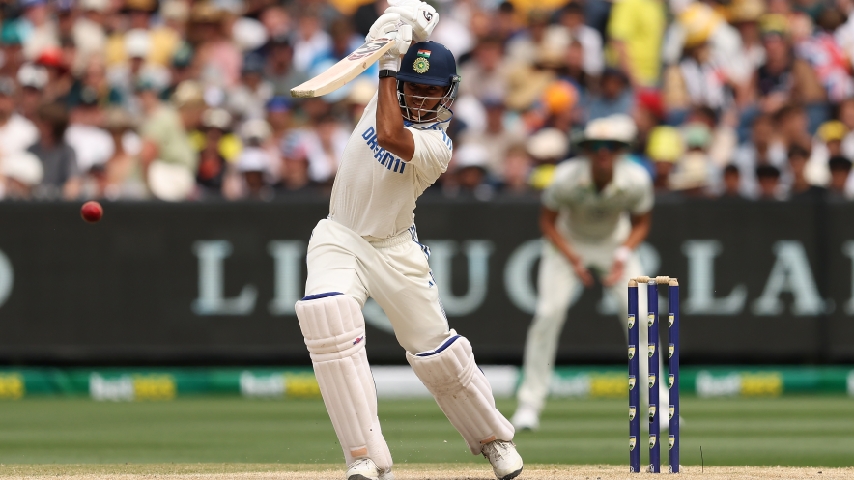- Wed, March 16, 2022

Loading

Loading

The fourth Test between Australia and India at the Melbourne Cricket Ground (MCG) took an electrifying turn on Day 5 as Yashasvi Jaiswal’s dismissal triggered controversy and heated discussions among fans and analysts. With just 15 overs remaining and India eight wickets down, Australia looked poised to seal the series. However, the manner of Jaiswal's exit—a pivotal moment in the match—has become the focal point of intense scrutiny and debat
"I can see the ball has made contact with the gloves. Joel, you need to change your decision."
— 7Cricket (@7Cricket) December 30, 2024
And with that, Jaiswal is out! #AUSvIND pic.twitter.com/biOQP4ZeDB
Jaiswal’s Grit and the Crucial Moment
Yashasvi Jaiswal, a young prodigy and one of India’s standout performers in the series, was batting on 84 off 208 deliveries when the contentious incident occurred. India, reeling under pressure with 186 runs still needed for a miraculous win or 15 overs to survive for a draw, pinned their hopes on Jaiswal and the resilient Washington Sundar. However, a delivery from Australian skipper Pat Cummins brought Jaiswal’s innings to an abrupt end under controversial circumstances.
Cummins bowled a short ball targeting Jaiswal's body, luring the left-hander into a pull shot. Jaiswal appeared to glove the ball behind to wicketkeeper Alex Carey, who lunged forward to complete a low catch. While Australian players erupted in celebration, Jaiswal stood his ground, prompting the on-field umpires to consult the third umpire, Sharfuddoula.
The Third Umpire’s Call and Technology’s Role
The decision hinged on technology and visual evidence. Side-on replays showed a deflection off the glove, but the Real-Time Snickometer (RTS) revealed no spike at the moment of contact. Despite the inconclusive audio evidence, the third umpire deemed the visual evidence sufficient to declare Jaiswal out.
This verdict stirred controversy, with many questioning the reliance on visual judgment over RTS, a tool specifically designed to detect faint edges. Jaiswal’s visible frustration and his prolonged exchange with the umpires as he walked back to the pavilion highlighted the contentious nature of the call.
Umpiring Under the Spotlight
The decision raised broader questions about the consistency and reliability of modern umpiring and technology. Critics argued that if RTS showed no spike, the benefit of the doubt should have gone to the batsman, as per cricketing norms. On-field umpire Sharfuddoula’s reliance on visual evidence rather than waiting for additional angles or clarification left fans and analysts divided.
Former Indian cricketer VVS Laxman called the decision "harsh," emphasizing that technology should be used to provide clarity, not add confusion. Australian legend Ricky Ponting, however, defended the decision, stating that the visual evidence was clear enough to confirm the dismissal.
Accusations of Gamesmanship
Social media exploded with reactions, with some Indian fans accusing the Australian team of pressuring the umpires into overturning the decision. While such accusations are speculative, they reflect the heightened emotions in a high-stakes series. Australian captain Pat Cummins, when asked about the incident in the post-match conference, maintained that his team acted within the rules and relied on the umpire's judgment.
Jaiswal’s Stellar Year Overshadowed
The controversy overshadowed what has been an extraordinary year for Jaiswal in Test cricket. The 21-year-old has amassed 1,478 runs in 2024, placing him third on the list of most runs scored in a calendar year by an Indian batsman, behind legends Sachin Tendulkar and Sunil Gavaskar. His innings of 84 at the MCG showcased immense grit and determination, further solidifying his reputation as India’s next batting mainstay.
Impact on the Match and Series
Jaiswal’s dismissal marked the turning point in India’s chase. His partnership with Virat Kohli had steadied the ship after early setbacks, but his wicket triggered a collapse. India lost three wickets for just 11 runs following Jaiswal’s departure, effectively ending their chances of saving the match.
Australia, sensing victory, pressed harder with their pace duo of Cummins and Scott Boland, complemented by Nathan Lyon’s relentless off-spin. Washington Sundar offered resistance but quickly ran out of partners, leaving India all out for 154, handing Australia a comprehensive victory.
The Bigger Picture: Communication and Decision-Making
The aftermath of Jaiswal’s dismissal also spotlighted a broader issue—the importance of clear communication and precise decision-making. Throughout the series, India struggled with misjudgments, as evidenced by a mix-up earlier in the innings between Jaiswal and Kohli that almost led to another disaster.
Such lapses in high-pressure situations often determine the outcome of close matches. As India reflects on this defeat, the need for better on-field communication and situational awareness will undoubtedly be a focus ahead of future contests.
What Lies Ahead
The controversy surrounding Jaiswal’s wicket has reignited debates on the efficacy of technology in cricket. While tools like RTS, Hawk-Eye, and UltraEdge have revolutionized the game, they are not without limitations. Cricket’s governing bodies may need to revisit protocols to ensure such incidents do not overshadow the spirit and integrity of the game.
For Jaiswal, this episode will serve as a harsh learning curve, but his performances in the series indicate a bright future. As for India, they will look to regroup and address their shortcomings, particularly in clutch moments.
Australia, meanwhile, celebrated a hard-fought win and a well-earned series victory, but questions about their approach during Jaiswal’s dismissal will linger in the minds of fans and pundits.
#YashasviJaiswal #INDvsAUS #CricketControversy #MCGTest #CricketNews
Comments:
Leave a Reply